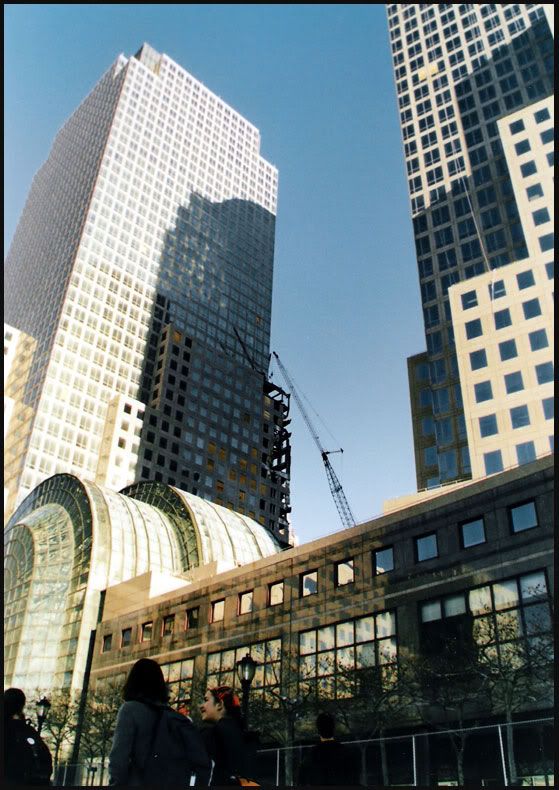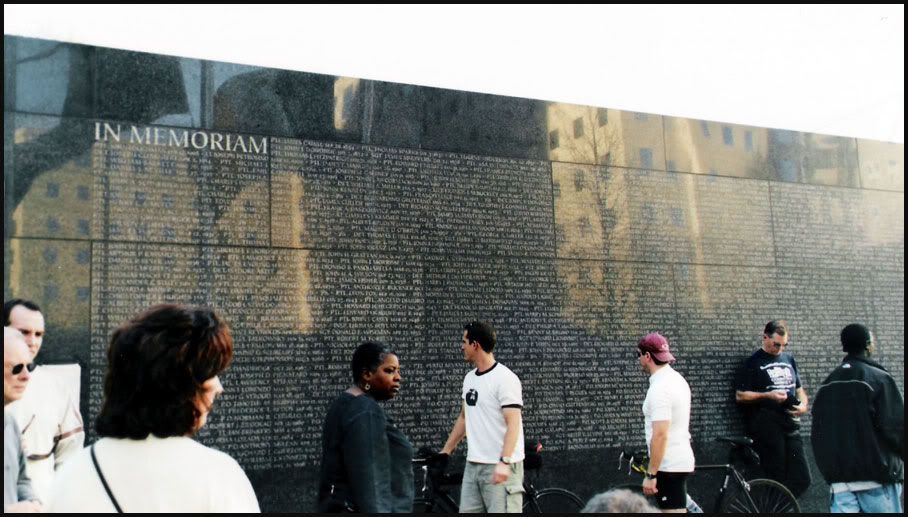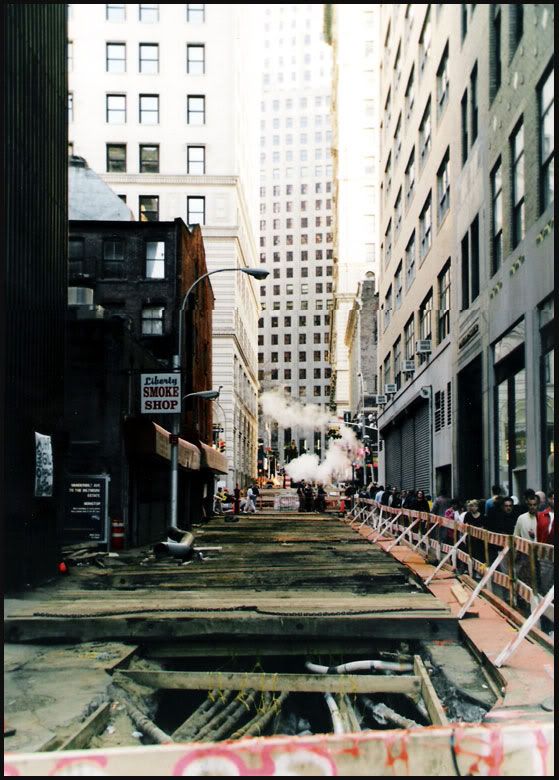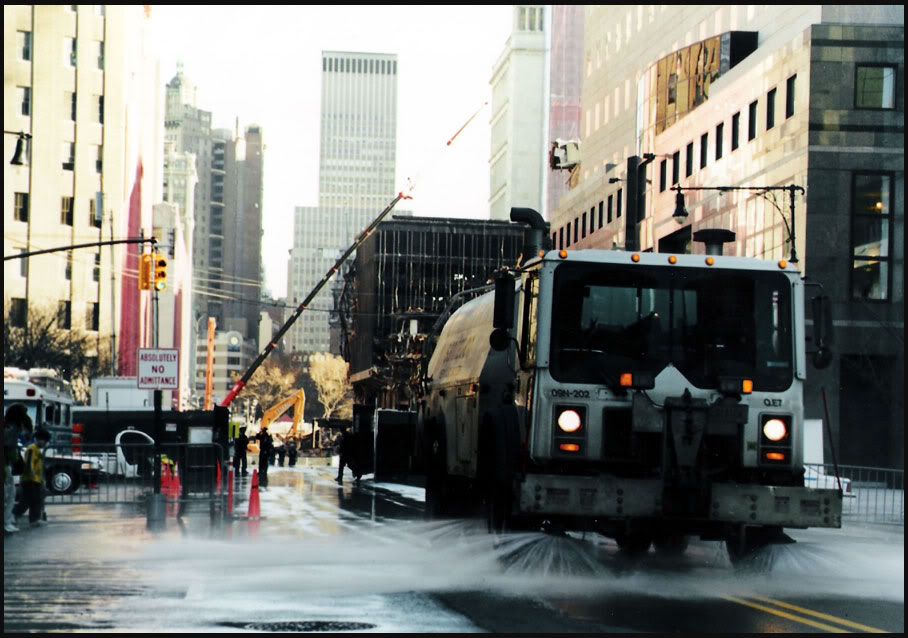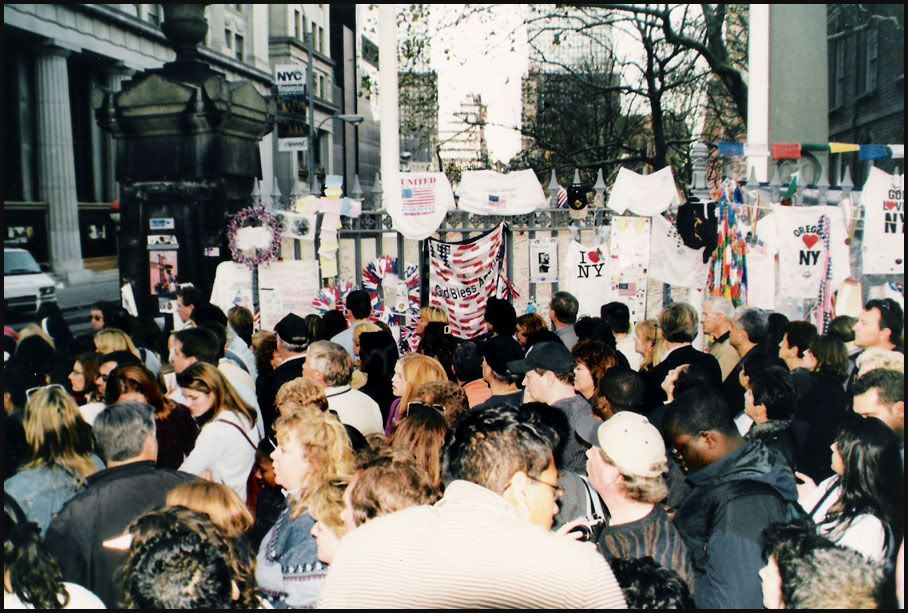so the NBDL (national basketball development league) kicks off another season with the tip of Fort Worth and Roanoke. What do you think of the league? |
Saturday, April 14, 2007
NBDL cities
Posted by
Admin
at
11:30 PM
0
comments
![]()
what is with all these, "what is America's....?"
i know this is proboly a useless thread, but im wondering why everybody starting threads about what is americas premere, hiphop, emo, city?? someone please help me out....> |
Posted by
Admin
at
10:00 PM
0
comments
![]()
buildings
i havea couple of questions and i cant seen to figure them out. |
Posted by
Admin
at
9:30 PM
0
comments
![]()
Rate the city: KC
What is the general consensus regarding KC and SSC like? How would you rate this city? Is it a ghetto? Is it another beautiful American city? What makes KC great? Is it's skyline impressive, or unimpressive, etc, etc. |
Posted by
Admin
at
9:03 PM
0
comments
![]()
Is West Virginia Southern or Northern?
I know this lady that I work with who was born and raised there and her accent is very southern sounding. She told me once about how her mother cooked her fried possom and mashed taters once. Anyway, I appreciate your comments.> |
Posted by
Admin
at
8:30 PM
0
comments
![]()
What is America's premier hipster city
I say LA. Don't forget we have all the actors, movie stars and rock stars. Also check this out. www.thecobrasnake.com To See and Be Scene With his camera, L.A.'s 'Cobra Snake' is both definer and darling of hipster subculture. By Daniel Hernandez, Times Staff Writer With evident glee, Mark "The Cobra Snake" Hunter bypasses a long door line and climbs the steps to the packed upstairs level of the Hollywood club Cinespace, his digital Canon D20 camera at his side. As soon as Hunter and his two female friends are in, hipsters in the crowd reach out to greet him, call out his name, give him high-fives. Hunter is frenetically taking pictures, complimenting strangers on their outfits, searching for the next shot almost before he finishes the first. -------------------------------------------------------------------------------- It is nearing midnight on a typical Tuesday for the city's most sought after self-made party photographer. "I've met you before, I met you at that party. What was it? The Diesel party?" Hunter asks Jonny Kops, a 25-year-old Brooklyn music producer standing against a wall holding a beer. Hunter is already snapping his portrait. "He's all over the place," Kops says after Hunter disappears to look for another shot. "He's the Ron Jeremy of photography," a reference to the famously homely porn star. In a minute, Hunter has made it to the club's stage, where he takes pictures of the band United States of Electronica as they prepare for their set. Hunter lifts a fist absently into the air and whoops to no one in particular: "Woo-hoo!" -------------------------------------------------------------------------------- By the scale of his lifestyle, Mark "The Cobra Snake" Hunter may be Los Angeles' preeminent hipster. He hangs out with models, DJs, pro skaters, fashion designers, celebrities, rock musicians, the unbearably cool and the painfully fashionable. He wears the most outrageous designer and vintage fashions, which he often gets as gifts. He flies all over the world to attend parties. People, young women especially, recognize him wherever he goes. And yet Hunter has no car, no steady job, and is barely 20 years old. He gets around on a bike. By his own admission, he is goofy and not exactly physically striking. He points at his wiry beard and the furry paunch of his stomach as evidence. All Hunter does is go out at night, take pictures of people who catch his eye and then post the photos on his website, thecobrasnake.com. Anybody could do it, of course, but Hunter has taken photo-blogging to the level of celebrity. His website is where Hunter, paparazzo to the unfamous, holds a mirror up to hipster culture and also helps manufacture it. The images he posts feature drinking, dancing, posing, jumping, laughing, stuffing food in one's mouth, same-sex physical affection, falling down, smoking, funny faces, open-mouthed kissing, tattoos, cellphones, teeth jewelry, sweating, vomit, blood, smeared makeup and skin. As a result, thecobrasnake.com attracts roughly 10,000 visitors a day and e-mails from all over the world. Hunter has been taking pictures and sharing them with friends since his late teens. After graduating from Santa Monica High School and finding Santa Monica College of little interest, he dropped out and found a job as an apprentice to L.A.-based guerrilla artist Shepard Fairey. In late 2003, an idea struck him. He drafted a manifesto, parts of which read: "Concept for the site: People try to look cool for a reason, to get noticed, but they put so much effort into their look and they should get more out of it…. This website will take pictures of all the hipsters in the scene, the scene could be a concert, a club, an art show or anything cool like that. So the way it goes is I'm goofy and like to talk to hot people, so I will ask to take their picture." The website launched in early 2004. At first it was known as polaroidscene.com, but after a few threatening letters from the Polaroid company, Hunter switched it to reflect his nickname. Hunter describes it as a "marketing tool" with no other attachable meaning. "Sharing the photos on the website is the only right thing to do," Hunter said at the start of a recent night out in Hollywood. "There's no reason I shouldn't be at somebody's party — for the most part." Hunter is sitting in his office in a workspace bungalow he shares with close friend and DJ Steve Aoki of Dim Mak Records. From his new digs on Cahuenga Boulevard, Hunter oversees two high school girls as unsalaried interns. He spends his time managing the site, organizing his nights, networking on his earpiece-enhanced cellphone and drawing. "If you want to look at me in a bad way, I'm playing off people's vanity." Hunter says that in L.A. and New York "they're almost accustomed to the idea that they're going to get some sort of fame or something out of it, which is cool. It's sort of a win-win for me and them." ADVERTISEMENT Jade Castrinos, a 19-year-old American Apparel employee and singer, arrives at the office. Castrinos is one of Hunter's most recognizable muses. His camera has captured her dancing, eating fast food, playing in the ocean, jumping, kicking, brushing her teeth, climbing out of fair rides, whipping her hair about and squeezing into a clothes dryer while smoking a cigarette among other things. In one picture, Castrinos is in a food aisle at a convenience store. She is jumping high into the air, her legs tucked underneath her, her hair an explosion. She is wearing tiny shorts and worn-down cowboy boots, the very image of hip, rock 'n' roll bliss. Hunter seems to feed off Castrinos' energy. As the interview progresses, she sits against a wall with a giant piece of bubble gum squeezed between her teeth. She pulls the ends of it down away from the sides of her mouth to create a long stretchy glob of goo, while Hunter goes behind a table to change into a pair of gleaming white Diesel jeans, a gift. "What are you doing?" Hunter asks flirtatiously. "Science project," she manages to say through the gum. "We got to take a picture of that," Hunter says, quickly snapping a few pictures with one hand while adjusting his belt with the other. * On the Scene The night starts at the Roosevelt Hotel for Mark "The Cobra Snake" Hunter. He has parlayed connections to make it inside a Teen Vogue party, poolside. There is a red carpet and paparazzi gantlet through which Paris Hilton, Nicole Ritchie and other celebrities walk. It's only 9 p.m., so the party is sparsely peopled. Castrinos has a Red Bull and a cigarette. Hunter is surveying the scene. There are large see-through beach balls floating on the pool. White leather ottomans are spread about with glass cocktail tables propped up by glittery disco balls. Bored, Hunter decides to head to the Bloc Party concert at the Palladium. He and Castrinos plan on returning to the Teen Vogue party and then make it to Cinespace just as the night reaches its peak. While mulling through this, he finds himself standing near a tall, gorgeous woman who has turned away from her conversation with a pair of men in dark jackets and is looking directly at Hunter.It seems obvious that the woman wants her picture taken. "I know," Hunter says, declining to lift his camera. "Sometimes I don't like giving in to that." Although he hesitates to admit it, Hunter is in some way an arbiter of fashion. He takes pictures of people who are extremely attractive, extremely unattractive or extremely well dressed. They wear outfits that look as though they belong in the fashion spreads of magazines like Flaunt or Nylon, but seem far more natural and casually perfect. "When I go to a club, I'm not telling people what they should wear," Hunter explains. "But I know for a fact various trend research companies have been stealing my photos for presentations." But it is more than what people are wearing that draws visitors to the site. It is what the pictures represent, the life of the party, of the seen and be seen, of being young, cool and intoxicated. Hunter receives e-mails from people in far-off world cities, among them Mexico City and Moscow, who plead with him to come party with them. He gets messages from far less urbane American locales, including South Carolina, expressing envy at his lifestyle. "I was just wondering," writes a viewer on the website's "Hot Email Action" section, "what are the qualifications to make it on your site?" ADVERTISEMENT Another fan e-mailed Hunter to suggest that he take pictures of shoes more often because she'd appreciate knowing what outgoing young women in Los Angeles were currently wearing on their feet. "Girls have asked me to take photos of people's hairstyles," Hunter says. "A few hairdressers have said, 'Girls are printing out photos from your website and bringing them in and saying, Cut my hair like this person…. It's sort of like the new MTV or Teen People or something." Hunter this year added a section to the website he calls "The Adventure Team." The purpose is to take pictures of people in L.A. who are underprivileged: the homeless and addicted, mostly. "I take pictures of what's there. That's why I think its OK to take pictures of the down and out. I'm not making it happen." Plus, he said, "there's a lot of parallels between the two scenes…. Some of these kids, it's like, 'Is that a homeless person or is that a hipster kid?' Because they make their hair all ratty and greasy and wear like the most ripped up pants and shoes. You have to take a double-take sometimes." On this night Castrinos, Hunter's reliable muse, is wearing high-heeled pumps, a tight skirt down to her knees and an off-the-shoulder top, the fabric in the back delicately torn. ("Pretty much homemade," she told Hunter after she arrived at the office.) She seems to be the perfect person to whom one might pose the question of where hipster street fashion is headed. "It's over," Castrinos says while waiting at the valet stand. "It came to the point where I hadn't been out in a while, and I went to Star Shoes, and every girl in there was wearing American Apparel shorts and boots." She frowns, adding: "It's done, dude." * Uncool? Inevitably, there's been a backlash against Mark "The Cobra Snake" Hunter. That's the hipster way. As soon as something in the subculture gets widespread attention, it is no longer cool. And then, just as quickly, once it becomes passe, it becomes ironically cool to like it again. As Hunter graduated from the scenester underground to A-list Hollywood parties, it is unclear where thecobrasnake.com lies on the barometer of cool. But mention Hunter's website across hipster neighborhoods in Los Angeles, and eyes roll. "For all the people who actually live here, they don't care anymore," says Juanita Garcia, 26, an interior designer who lives in Echo Park. "I haven't checked it in, like, two, three months." "Something about it just seems forced," said Joey Arak, the New York blogger behind taleoftwocities.org, which spoofs Hunter's photos. People are posing, he says, "like, 'This is how I'm going to be, on purpose.' It just doesn't come off as genuine." Choire Sicha, a Southern California native who edits the Daily Transom, a blog at the New York Observer, says Hunter is "like an old fashioned cool-hunter." He points to the countless photography websites and blogs that have proliferated on the Internet as proof that, in some ways, there are thousands of Mark "The Cobra Snake" Hunters roaming the streets. "But he's sort of this intermix between art and party and city life…. He's doing parties and he's doing homeless people. That's his strange non-overlap." Trust Fund Bohemians ADVERTISEMENT Finally reaching Cinespace, after another long day of the work of being himself, Hunter is still full of energy. It is impossible to keep up with him. Hunter moves about the international scenester circuit so much that he lives in effect out of a backpack. On this night he is on what amounts to a five-day layover at home between traveling to New York and Austin, Texas. In the last few months, he's partied in Las Vegas, Chicago, Tokyo, San Diego, Tijuana, Austin, London, and several times in New York, where many local hipsters assume he is based. This month, he returns to Europe. Doesn't he ever have to work? Hunter says he gets paid to shoot certain parties and events, but he is otherwise circumspect about his sources of income. He says he is aware of the criticism he and people "in the scene" often face, that they are "trust fund babies" who have the luxury to be disaffected, blithe and fashionable. He basically agrees with it. "It's kind of like a bunch of people that don't really care about things," Hunter says, describing the subjects of his photographs. "I don't know how these people can party every night. It doesn't seem like they have much responsibility. They could be supported by their parents even up to age 30. They could be bohemian, or look bohemian and act bohemian." Hunter grew up in the Hollywood Hills. As he explains it, he is the son of a "landowner and a dental hygienist to the stars." He says he is lucky to have the room and the wherewithal to do his work, which he takes far more seriously than one might gather from the images on his website. He points out that he doesn't charge people to view his pictures and makes them easily linkable and large enough for people to print or download for whatever uses they see fit. He doesn't smoke or do drugs. He says he never uses his camera to get a date. "I want to have good vibes with people," Hunter says. "With enough free love that I'm giving out, I would hope it would come back eventually." Back at Cinespace, the night becomes a blur. Hunter is spotted in a moment of repose standing behind the DJ booth. He is watching the crowded dance floor, a look of contentment readable on his face even in the dark, noisy room. * 'Happy Little Bubble' The next day, Hunter is at the Grove shopping mall, getting recognized by the young clerks in the Apple computer store. He speaks excitedly over his cellphone about cool events coming up, about an upcoming trip to Austin, about a friend's new project, a scenester ice cream truck. "That's what so exciting about the time we're in right now. There's so much space for creativity. Our parents' generation had to deal with wars and Vietnam and all that. Ever since the '80s and '90s, it's been a real good time." But what about the war in Iraq? "Are we actually dealing with any of it? I'm not getting recruited for war. I'm in my happy little bubble over here in sunny Los Angeles, California." Hunter has a point. The conversation ends with a discussion of his sudden craving for a $6 milkshake at a nearby Haagen-Dazs shop.              > > |
Posted by
Admin
at
8:00 PM
0
comments
![]()
Las Vegas Entertainment Capital
Who thinks las vegas is the entertainment capital of the world> |
Posted by
Admin
at
7:30 PM
0
comments
![]()
What is America's premier emo city?
Which one is America's premier emo city?> |
Posted by
Admin
at
7:00 PM
0
comments
![]()
Electric trains in the USA
Which railway lines in the USA are electrified? Which current systems are used on them? |
Posted by
Admin
at
5:00 PM
0
comments
![]()
Tallest structure in the USA built of wood
Which is the tallest structure in the USA ever built of wood? |
Posted by
Admin
at
3:30 PM
0
comments
![]()
What other US city reminds you most of your city?
While all of the cities in our great nation have their own qualities that make them unique, there are just as many similarities between many of them. What other US city, of the same general size, reminds you most of your city, in culture, surroundings, people, etc.?> |
Posted by
Admin
at
3:00 PM
0
comments
![]()
What is America's premire in city in terms of being Milwaukee?
discuss> |
Posted by
Admin
at
2:00 PM
0
comments
![]()
Which states have more in common with Canada than with the US?
Are there any states that have more in common with Canada than with the US? If so, which ones?> |
Posted by
Admin
at
11:30 AM
0
comments
![]()
FIRST NON-WHITE/MALE PRESIDENT
Which is most likely to happen first (if at all)? Female, Black or Hispanic U. S. president? Is it likely to happen Within the next five elections? Is he/she most likely to be Republican or Democrat? Will a minority ever win his/her party's nomination for president? |
Posted by
Admin
at
10:30 AM
0
comments
![]()
America's Financial Markets: Chicago challenging New York?
Okay, I am not posting this so that a bunch of New Yorkers will get pissed off. Chicagoans know that New York is the grand master of all cities and is the commercial and cultural hub of the known universe. That being said, this is an article that pertains to a particular niche of the economy; ie financial exchanges. It is from Fortune Magazine and was originally posted by Windy City Dude in the Chicago forums. Any thoughts? |
Posted by
Admin
at
10:00 AM
0
comments
![]()
Best ballpark skyline view?
Oriole Park at Camden Yards in Baltimore is the prototype "throwback" ballpark against which all those that came after are judged. The outfield skyline view and downtown setting shattered the myth that the '70's and '80's style suburban, multipurpose stadiums were the way to go. |
Posted by
Admin
at
9:30 AM
0
comments
![]()
Weekly Lists
Sorry, I didnt update my Weekly List on Wednesday, my computer decided it wouldnt work....here is your belated list.... |
Posted by
Admin
at
9:00 AM
0
comments
![]()
The Strip
Would you classify the Las Vegas Strip as an "urban" district? Not Las Vegas as a whole, because we know the city has a lot of sprawl, but what's everyone's opinion of the strip. |
Posted by
Admin
at
8:30 AM
0
comments
![]()
PORTLAND, OREGON
PORTLAND, OREGON |
Posted by
Admin
at
8:00 AM
0
comments
![]()
Gauging a city based on metro vs city boundaries
I have noticed there are forumers who still insist in using city boundaries to gauge a city. |
Posted by
Admin
at
7:30 AM
0
comments
![]()
Louisiana Superdome New Light Show...Pics
New Light Show on the Superdome... |
Posted by
Admin
at
7:00 AM
0
comments
![]()
Possible twin cities, which would rock?
I'm going out on my imagination here but we have major cities that are connected to other ones (and I mean like across the river or street not 90 miles away), like Minneapolis-St.Paul, and San Francisco-Oakland. Let's pretend the cities in the poll complimented each other some way, which do you think would be the coolest? Not the best but would ultimely be the coolest?> |
Posted by
Admin
at
6:32 AM
0
comments
![]()
Ultimate city combos!
I'm going out on my imagination here but we have major cities that are connected to other ones (and I mean like across the river or street not 90 miles away), like Minneapolis-St.Paul, and San Francisco-Oakland. Let's pretend the cities in the poll complimented each other some way, which do you think would be the coolest? Not the best but would ultimely be the coolest?> |
Posted by
Admin
at
6:00 AM
0
comments
![]()
A TRIBUTE TO the WTC- NYC -before and after 9/11 (my pictures)
A TRIBUTE TO THE SYMBOL OF ALL SKYSCRAPERS... |
Posted by
Admin
at
5:30 AM
0
comments
![]()








 >
>  >
> 



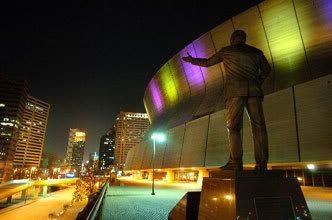
 >
> 


























